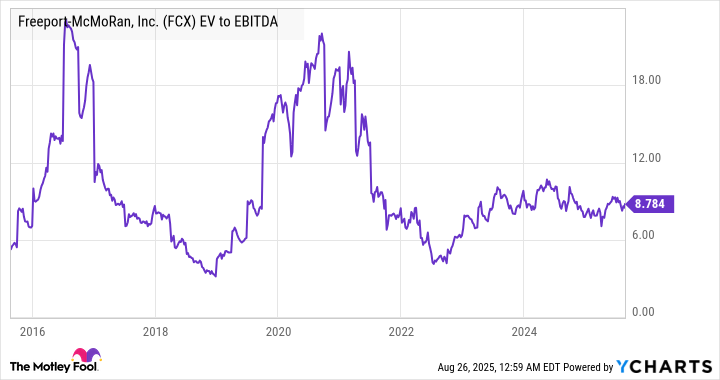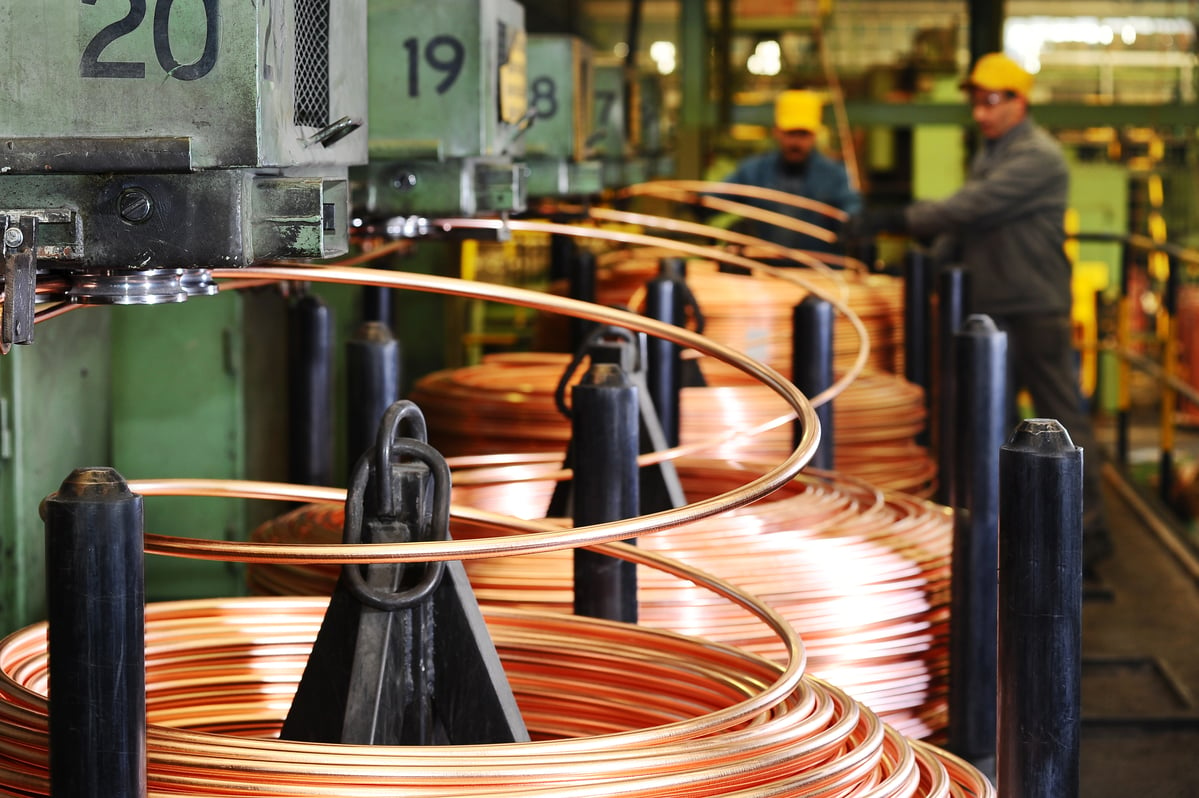The share price of America's leading copper company, Freeport-McMoRan (NYSE: FCX), has been volatile recently, even falling sharply at the end of July after the Trump administration's tariff actions left copper speculators disappointed. However, the stock has recovered since then, and there's likely more to come for long-term investors. Here's why.

Image source: Getty Images.
A complicated copper market in 2025
Copper speculators spent the first half of the year debating whether President Trump's tariffs, as expected, would include 50% tariffs on refined copper. The fear of such created a significant premium for U.S. copper, priced on the Commodity Exchange (COMEX) and the international price of copper on the London Metal Exchange (LME).
Discussing the matter in late July, Freeport-McMoRan CEO Kathleen Quirk noted that "as of yesterday's close, the U.S. premium approximates per pound or about 28% above the LME price. This implies an approximate $1.7 billion annual financial benefit on Freeport's U.S. sales."
The company is a major beneficiary of higher COMEX prices because, according to Chairman Richard Adkerson, "We are the dominant producer in the U.S. producing over 70% of the country's refined copper, we're fully integrated."
In the end, the Trump administration placed tariffs on semi-finished goods (wire, pipes, etc) but excluded refined copper. The decision caused the COMEX-to-LME premium to collapse, and disappointed Freeport-McMoRan investors hoping for an extended period of super profits for the company.
Still, there are five reasons why investors should use this period of weakness to buy into the stock.

NYSE: FCX
Key Data Points
The electrification of everything and tariffs
First, while copper still has highly cyclical demand driven by its sensitivity to the economy due to its widespread use in industry (construction, electricity, transportation, etc), there's an increasing element of underlying growth in demand coming from the electrification of everything (electric vehicles, data centers, Internet of Things, etc).
That argument is strengthened by booming investment in data centers, and the electricity (including transmission and distribution) needed to power them, as well as ongoing growth in electric vehicle (EV) and hybrid sales, while sales of internal combustion engines (which use significantly less copper) remain weak.
Second, while refined copper is exempt from tariffs, semi-finished goods are not, and that's likely to strengthen the competitive position of domestic manufacturers who are more likely to buy U.S. refined copper from Freeport-McMoRan.
Leaching and expansion projects
Third, the company continues to develop its leaching initiative that recovers copper from existing stockpiles. Management is targeting 300 million pounds of copper per annum from this initiative by the end of the year, and aiming for 800 million pounds by the end of the decade.
Putting these figures into context, management estimates it will sell 4.3 billion pounds of copper in 2027. Not only would hitting 800 million pounds of copper represent a significant revenue expansion opportunity, but it could also boost profit margins as leaching requires low capital investment and operating costs.

Image source: Getty Images.
Fourth, the company has brownfield expansion projects in the pipeline, which could expand copper production by 2.5 billion pounds in the future -- 47% of which is in the U.S., 33% in Chile, and 23% in Indonesia.
Valuation remains compelling
Finally, whether there's a premium for COMEX copper or not, or whether the administration puts tariffs on refined copper or not, Freeport-McMoRan is an excellently valued stock, provided you are at least neutral on the price of copper.
Management always lays out the company's earnings and cash flow sensitivity to the price of copper on its earnings calls. The COMEX price has had a wild ride in 2025, starting the year at about $4 per pound, then surging to as much as $5.80 per pound in mid-July, only to crash down to about $4.40 after it became clear Trump wouldn't tariff refined copper imports.
FCX EV to EBITDA data by YCharts
Interpolating management's figures (and assuming no COMEX premium), the company would generate $13.1 billion in earnings before interest, taxation, depreciation, and amortization (EBITDA) in 2026/2027. Based on the current enterprise value (EV) of $67.5 billion, this would put the stock on an EV/EBITDA multiple of less than 5.2 -- compelling value based on the valuation chart above.






